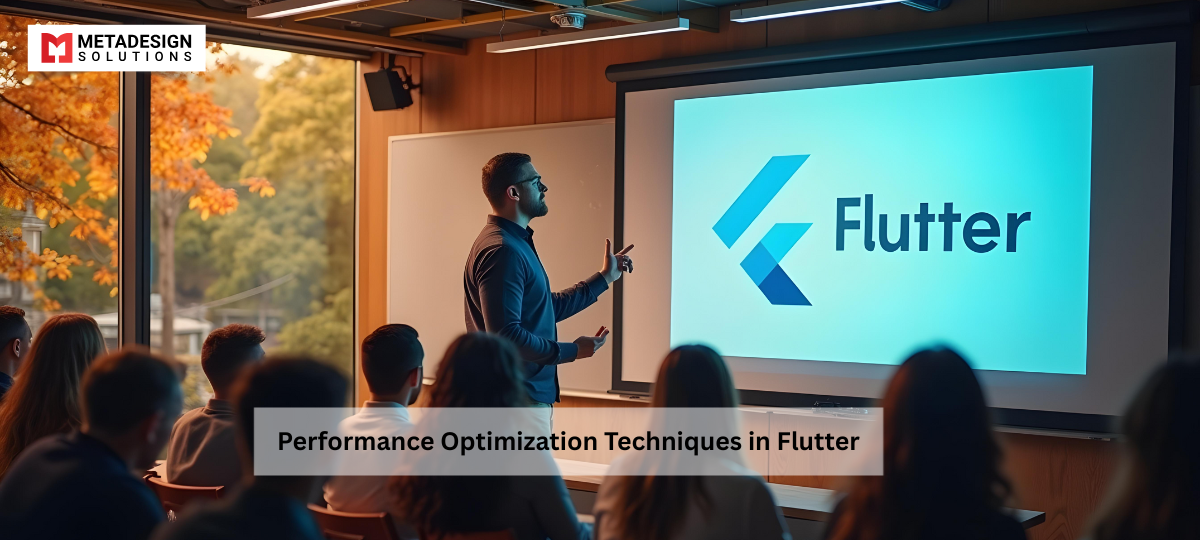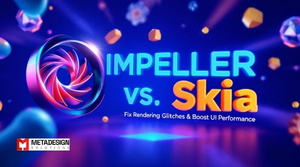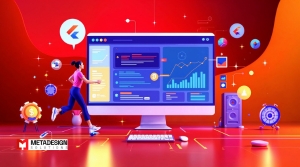Performance is a critical factor in app success. Users expect smooth, responsive experiences, and any lag can lead to dissatisfaction. Flutter, known for its high performance, still requires careful optimization to ensure your app runs efficiently.
At MetaDesign Solutions, we’ve honed techniques to maximize Flutter app performance. In this blog, I’ll share practical strategies to optimize your Flutter applications.
Understanding Flutter’s Performance Model
Flutter renders UI using its own high-performance rendering engine. It avoids the need for a JavaScript bridge, resulting in faster performance. However, to harness this power, developers must follow best practices.
Common Performance Pitfalls
- Overloading the Main Thread: Performing heavy computations on the UI thread.
- Inefficient Widgets: Using widgets that rebuild unnecessarily.
- Excessive Repaints: Triggering rebuilds when not required.
- Memory Leaks: Not disposing of controllers and animations.
Optimization Techniques
1. Use the const Keyword Wisely
Using const widgets helps Flutter know that the widget won’t change, reducing rebuilds.
Example:
dart code:
const Text('Hello World');
Make Your Flutter Apps Lightning Fast
Worried about performance lags? Connect with MDS to implement proven optimization techniques in your Flutter projects.
Benefit: Improves performance by reusing widget instances.
2. Avoid Rebuilding Unnecessary Widgets
Use setState judiciously and localize it to the smallest possible scope.
Inefficient:
dart code:
setState(() {
// Updates entire widget
});
Efficient:
- Use ValueNotifier and ValueListenableBuilder for granular updates.
- Employ Provider or Bloc to manage state outside the widget tree.
3. Utilize ListView.builder
For lists with many items, use ListView.builder to build items on demand.
Example:
dart code:
ListView.builder(
itemCount: items.length,
itemBuilder: (context, index) {
return ListTile(title: Text('Item ${items[index]}'));
},
);
Why: Prevents building all list items at once, saving memory and processing time.
4. Optimize Images
- Use Appropriate Formats: Choose the right image formats (e.g., WebP for better compression).
- Cache Images: Use CachedNetworkImage to cache images locally.
- Resize Images: Serve images at the size they’ll be displayed.
5. Limit the Use of Opacity Widget
Opacity can be expensive because it creates a new layer.
Alternative: Use FadeTransition or adjust the alpha value in Color if possible.
6. Profile and Analyze Performance
Use Flutter’s DevTools to identify performance bottlenecks.
- Performance Overlay: Visualize the rendering performance.
- CPU Profiling: Analyze CPU usage during app execution.
- Memory Profiling: Monitor memory allocation and detect leaks.
Actionable Step: Run your app in profile mode to get accurate performance metrics.
bash code:
flutter run --profile
7. Avoid Blocking the UI Thread
Perform heavy computations asynchronously.
Solution:
- Use compute() function to run tasks in a separate isolate.
dart code:
import 'dart:async';
import 'package:flutter/foundation.dart';
Future<String> heavyComputation(String data) async {
return compute(_processData, data);
}
String _processData(String data) {
// Heavy processing
return 'Processed $data';
}
8. Efficient Use of Animations
- Use Built-In Animations: Flutter’s built-in animations are optimized.
- Avoid Over-Animating: Too many animations can strain resources.
- Dispose Controllers: Always dispose of AnimationController to free resources.
9. Reduce Widget Depth
Deeply nested widgets can affect performance.
- Use Functions: Break down complex widgets into functions rather than classes when state management isn’t required.
- Flatten Widgets: Simplify the widget tree where possible.
10. Leverage Pagination and Infinite Scrolling
For large data sets, implement pagination or infinite scrolling to load data in chunks.
Example:
- Use packages like infinite_scroll_pagination to simplify implementation.
Real-World Application at MetaDesign Solutions
We worked on a news aggregator app that initially suffered from slow load times and laggy scrolling.
Challenges:
- High-resolution images loading simultaneously.
- Complex list items with multiple widgets.
Optimizations Implemented:
- Implemented ListView.builder with lazy loading.
- Used CachedNetworkImage to cache images.
- Optimized widgets by reducing rebuilds.
Outcome: Achieved a 60% improvement in load times and a smooth scrolling experience.
How MetaDesign Solutions Can Help
Optimizing performance requires expertise and attention to detail.
Our Services:
- Performance Audits: Analyze your app to identify and fix bottlenecks.
- Optimization Implementation: Apply best practices to enhance performance.
- Training: Educate your development team on optimization techniques.
Why Choose Us:
- Expert Knowledge: Deep understanding of Flutter’s performance mechanics.
- Proven Results: Track record of improving app performance.
- Comprehensive Approach: Focus on both code optimization and architectural improvements.
Get in Touch
Want to ensure your Flutter app delivers top-notch performance? Leverage MetaDesign Solutions’ Flutter app development services to optimize your app’s speed, reliability, and responsiveness.
Reach out to us at sales@metadesignsolutions.com to learn how we can assist you.
Related Keyphrase:
#Flutter #FlutterDev #FlutterPerformance #MobileAppDevelopment #AppOptimization #FlutterTips #CrossPlatformDevelopment #FlutterApps #AppPerformance #FlutterUI #MobileAppSolutions #FlutterDevelopment #TechSolutions #FlutterCommunity #FlutterDevelopmentCompany #FlutterAppDevelopmentCompany #FlutterAppDevelopmentServices #HireFlutterDevelopers #FlutterExperts #FlutterCodeOptimization #AppDevelopmentServices #MobileAppDev #AppPerformanceOptimization #FlutterTutorial #FlutterBestPractices



